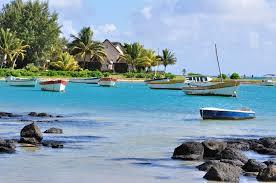
The prevailing theory is that the island of Mauritius was created by volcanic activity, but according to the new study a small primordial continent was left behind when the super-continent Gondwana split into Africa, India, Australia and Antarctica more than 200 million years ago.
The glittering, multicolored rocks, known as the zircons, that were found in Mauritius, are billions of years old and belong to one of the earliest periods in Earth's history, the researchers said. Other rocks on the island, however, are aged no more than 9 million years ago.
"The fact that we have found zircons at this age proves that there are much older membrane materials under Mauritius - which could have originated only from a continent," said YAKOV Cohen, the lead editor of the study.
The Earth's crust is composed of two parts - the continents, which rise above the oceans because they consist of lighter rocks such as granite, and ocean basins that sink down because they are made up of denser rocks like basalt. While the continental crust may be about four billion years old, the oceanic crust is much younger and continues to be built continuously while molten rock is emitted from the cracks in the ocean floor. This phenomenon is called the center-ocean range.
The prevailing theory is that the island of Mauritius was created by a volcanic activity that came from a central-oceanic ridge, meaning that an older crust should not be present in the area. But according to a new study published this week, a small primordial continent was left behind when the super-continent Gondwana split into Africa, India, Australia and Antarctica more than 200 million years ago. Subsequently, the birth of the island covered the primeval rock with layer after layer of chilled lava, thus building the lion's share of the island that can be seen today.